Lifestyle
The Best Self-Tanners of 2024 for an All-Over Glow

We may receive a portion of sales if you purchase a product through a link in this article.
The summer solstice is my Super Bowl. I was born in the summer and my name literally means ‘The Sun.’ When the weather gets warmer, I defrost. I relish al fresco dining, summer outfits, and the smell of coconuts and vanilla (my signature summer scents). As a Black woman, I grew up inundated with beauty standards that valorized lighter skin and told me to get out of the sun. But for years, I would bare my skin to the sun in pursuit of my summer shade. I’ve always felt most myself after a sun-drenched day.
Cut to a decade later and I’m paying for my devotion with endless bottles of sunscreen and piles of protective clothing. While I still enjoy a healthy amount of sun exposure—my serotonin depends on it—I make sure to apply and reapply sunscreen fanatically. And you’ll never see me out without a hat.
Featured image from our interview with Remi Ishizuka.

Everything You’ve Ever Wanted to Know About Self-Tanner
Finding the best self-tanner has proved to be my sun-obsessed solution. Luckily, the past few years have transformed the self-tanner industry into a certified skincare category. From skin-first formulas to BIPOC-led brands for darker skin tones, sunless tanner is no longer a guaranteed way to look orange on vacation. Instead, it’s our secret to glowing skin year-round. Which is why we’ve dug deep to discover the best self-tanners.
How to Choose the Best Self-Tanner
Raise your hand if you’ve ever been burned—maybe literally—by self-tanners. Thankfully these days, gems abound. To find the best of the best self-tanners, we went to the experts. Ahead, Sabrina Johnson, spray-tan stylist and founder of Everything Made For You, and Nichelle Temple, a celebrity esthetician and founder of Inderma Studio, dish on everything to know about shopping for and applying the best self-tanners. Let’s get glowing.

Benefits of Using Self-Tanner
Self-tanners combine the best of both worlds: glowy, natural color without compromising your skin health. On your body, a self-tanner can hide keratosis pilaris and hyperpigmentation like nothing else.
“Self-tanner and spray tans are not only a great solution to replace sitting in the sun, but they are also safer,” says Johnson. “You can achieve a natural glow without the risk of sun damage caused by UV radiation, which can cause skin cancer, premature aging, and hyperpigmentation.”
“It is the best solution if you like the look of a bronzed sun-kissed glow,” adds Temple, who notes formulas’ significant improvements and innovations over the past few years. “Luckily, self-tanners have come a long way in terms of application, scent, and longevity.”
The Myth of ‘Safe Tanning’
Any color is a sign of skin damage—disheartening, I know. Especially if you forgo sunscreen or use a lower SPF to deepen your shade. Temple warns against it, even in service of a tan. She encourages staying mindful of the following top summer skincare mistakes:
- Not wearing sunscreen regularly
- Forgetting to apply sunscreen on sensitive areas like ears, lips, back of the neck, and tops of feet and hands
- Neglecting to reapply sunscreen
- Not applying enough sunscreen
Some people also apply self-tanner, then forget additional sun protection. Don’t make that mistake. “Self-tanner will not provide any sun protection, so it is still important to protect the skin with sunscreen even if it looks like you have a ‘base tan.’”

Self Tanner vs. Salon Tanning
As a spray tan stylist, Johnson is an expert at giving clients the perfect glow in the salon. However, she notes that you can achieve a similar look at home.
“Self-tanners are considered a DIY application. You can apply them at home using various products like lotions, mousse, and serums. Self-tanners are generally less expensive, but results can vary based on product, and application may require trial and error for beginners.”
To get the salon-like glow at home, be sure to choose the right tanner for your skin type, skin color, and desired shade.
Unpacking Self-Tanner Ingredients
According to Temple, look for naturally derived dihydroxyacetone first. “This is the most popular ingredient. Some bonus ingredients would be a formula that is botanical-based and hydrating with aloe vera, glycerin, or jojoba to keep the skin moisturized.”
Johnson agrees. Get a self-tanner that can both hydrate and make your skin glow. Johnson also recommends antioxidants to give your skin a natural glow, too.
Look for these ingredients in your self-tanner:
- Hyaluronic acid
- Glycerin
- Aloe vera
- Vitamins A, C, and E
- Antioxidants: (Niacinamide, Resveratrol, Coenzyme Q10, Ferulic acid, Copper, Zinc, Selenium)
To keep your glow going, avoid anything that will dry out your skin and undo your skin prep. Johnson advises: “Avoid self-tanners with harsh chemicals like parabens, sulfates, and phthalates.” Alcohol, which is found in many quick-drying formulas, can also be harmful, but it can exacerbate dryness and dehydration.

How to Make Your Self-Tanner Last Longer
“To get the most long-lasting and natural-looking tan, make sure you have exfoliated and moisturized the body before application,” advises Temple, explaining that you should prioritize areas like the elbows and knees.
Johnson also recommends a full skin-prep and self-tanner routine:
“The biggest mistake you can make when using self-tan is not prepping the skin. Skipping exfoliation can lead to uneven application and patchiness. Avoid chemical exfoliants like AHA, BHA, and retinol before and after tanning as they will make your tan fade faster.”
Remember: when it comes to applying product, less is more. As Johnson notes, you can always add another layer but you can’t stop the process once it’s applied. “During your first shower, only use lukewarm water, no soap, and make sure to get all the bronzer off, otherwise you might develop streaks.”
Lastly, hydration is key. Drink water and moisturize daily to maintain an even tan for as long as possible.
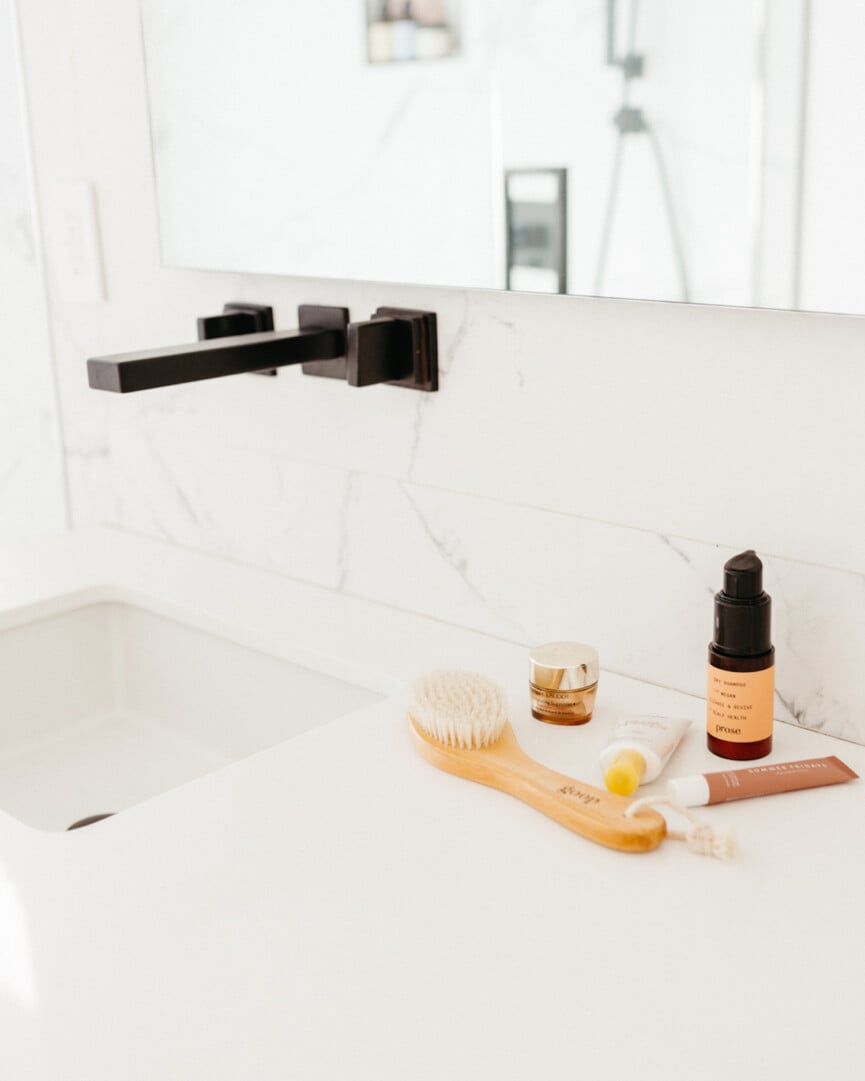
The Best Self Tanners, Tested and Reviewed
These days, you can find the right self-tanner for you without having to risk turning orange. “Each product offers different benefits, so consider your skin type, desired outcome, and any skin sensitivities when choosing a self-tanner,” says Johnson.
If you’re standing in the self-tanner aisle or toggling between product types, consider this your definitive guide to the best self-tanners.
Smells great and applies entirely streak-free. This is the first anti-aging, anti-cellulite self-tanner. The list of benefits is lengthy—there are over 6,000 reviews to prove it.
- Key ingredients: Dihydroxyacetone, Glycerin, Castor Oil, Coconut Oil, Amino acids, Antioxidants
- Time to tan: 2 hours
- The shower test: Rinse off after a minimum of 2 hours (use overnight for a deeper tan)
- How long it lasts: 10 days
- Other notes: Includes anti-aging and anti-cellulite ingredients
With 20 facial tanning pads, you’re well-equipped to get your perfect glow. We love that these pads not only give you the color you’re after, but they deliver a skin-supporting dose of Alpha and Beta Hydroxy Acids to deeply exfoliate the skin and slough away dead skin cells.
- Main ingredients: Encapsulated Dihydroxyacetone, Alpha Beta acids, Vitamin D
- Time to tan: 1 hour (continues developing with daily use)
- The shower test: Wash off after 6-8 hours
- How long it lasts: 4-5 days. Apply 2-3 times a week to maintain results.
- Other notes: Exfoliates as you tan for anti-aging benefits
Proof that you don’t need to splurge for the tan you want. A quick Target run and you’ll have the lightweight, natural bronze your summer needs. This self-tanner dries quickly and has a nice tropical scent you’ll love.
- Main ingredients: Glycerin, Dihydroxyacetone
- Time to tan: Instant (60 seconds)
- The shower test: Wait 4-5 hours before showering.
- How long it lasts: 1-2 weeks.
- Other notes: Buildable. Use it the next day for an even deeper color.
This nourishing formula is great for beginners, building a gradual glow that’s sun-kissed but still subtle. We love the blend of nourishing, hydrating ingredients like Vitamin E and Shea Butter to deliver a glow from the inside out.
- Main ingredients: Dihydroxyacetone, Sweet Almond Oil, Coconut Oil, Oat Oil, Raspberry Seed Oil, Cocoa Butter, Shea Butter
- Time to tan: Gradual (2-4 hours)
- The shower test: Shower after 4-6 hours.
- How long it lasts: 1-2 weeks
- Other notes: Contains Cellutone Complex, which firms the skin and reduces the appearance of cellulite.
For when you’re minutes from stepping out the door and need a little something to finish your look, Isle of Paradise has you covered. Hyaluronic acid, glycerin, and vitamin C deeply hydrate the skin for up to 24 hours.
- Main ingredients: Dihydroxyacetone, Caramel, Glycerin, Castor Oil, Avocado Oil, Hyaluronic Acid, Coconut Oil, Ascorbic Acid,
- Time to tan: 30 mins (deepest tan in 3 hours)
- The shower test: Wash off after 30 minutes
- How long it lasts: 7 days
- Other notes: Leave on longer for a deeper tan
Best Self-Tanner for Darker Skin Tones: Bondi Sands Pure Self Tan Foaming Water Dark
- Main ingredients: Dihydroxyacetone, Hyaluronic Acid, Vitamin C, Vitamin E
- Time to tan: 6 hours (For the deepest tan, re-apply 30 minutes after initial application.)
- The shower test: No rinse needed. Will develop for 24 hours after application.
- How long it lasts: 5-7 Days
We all want a healthy, luminous glow, but sometimes, self-tanners are simply too much. Saltyface delivers the exact radiance you want, with a natural-looking appeal and light, water-like wear.
- Main ingredients: Dihydroxyacetone, Erythrulose, Glycerin, Aloe, Chamomile, Cucumber, Marshmallow Root, Calendula
- Time to tan: Gradual, continues developing over 24 hours
- The shower test: Use after showering. For more subtle results, wash off 30-60 mins after applying.
- How long it lasts: 2-3 days. Use 1-2 times a week to maintain tan.
- Other notes: Made specifically for your face
These daily bronzing drops enrich your tan with an instant color boost. Apply directly to your face or mix with your body cream to deepen and preserve your bronze. Great for keeping your self-tanner glowing while on vacation.
- Main ingredients: Dihydroxyacetone, ceramides, vitamin C
- Time to tan: Instant
- The shower test: Washes off in the shower
- How long it lasts: 24 hours. Requires daily application.
Lifestyle
14 Best Summer Cocktails to Beat the Heat

Summer is the season of many things—outdoor gatherings, long days in the sun, and, for many, a more flexible schedule. When I find myself with this extra time on my hands, one of my go-to activities as a food and bev fanatic is to experiment with new recipes and tweak some of the classics. So, what better time to test some of the best summer cocktails than during the year’s hottest months? With so many options to choose from, this is your foolproof guide to crafting the season’s most refreshing sips.
The Best Summer Cocktails to Try This Season
So what makes the best summer cocktails? Typically, the spirits are light and bubbly and often complemented with fresh fruit or citrus. The goal is to create a drink that’s easy to sip and can hold its own against the summer heat.
There’s something for everyone on this list—stronger sips with a tequila or vodka base and wine-based options complemented with a fruit liqueur. Whichever path you choose to take on your summer cocktail journey, we’ve got you covered.
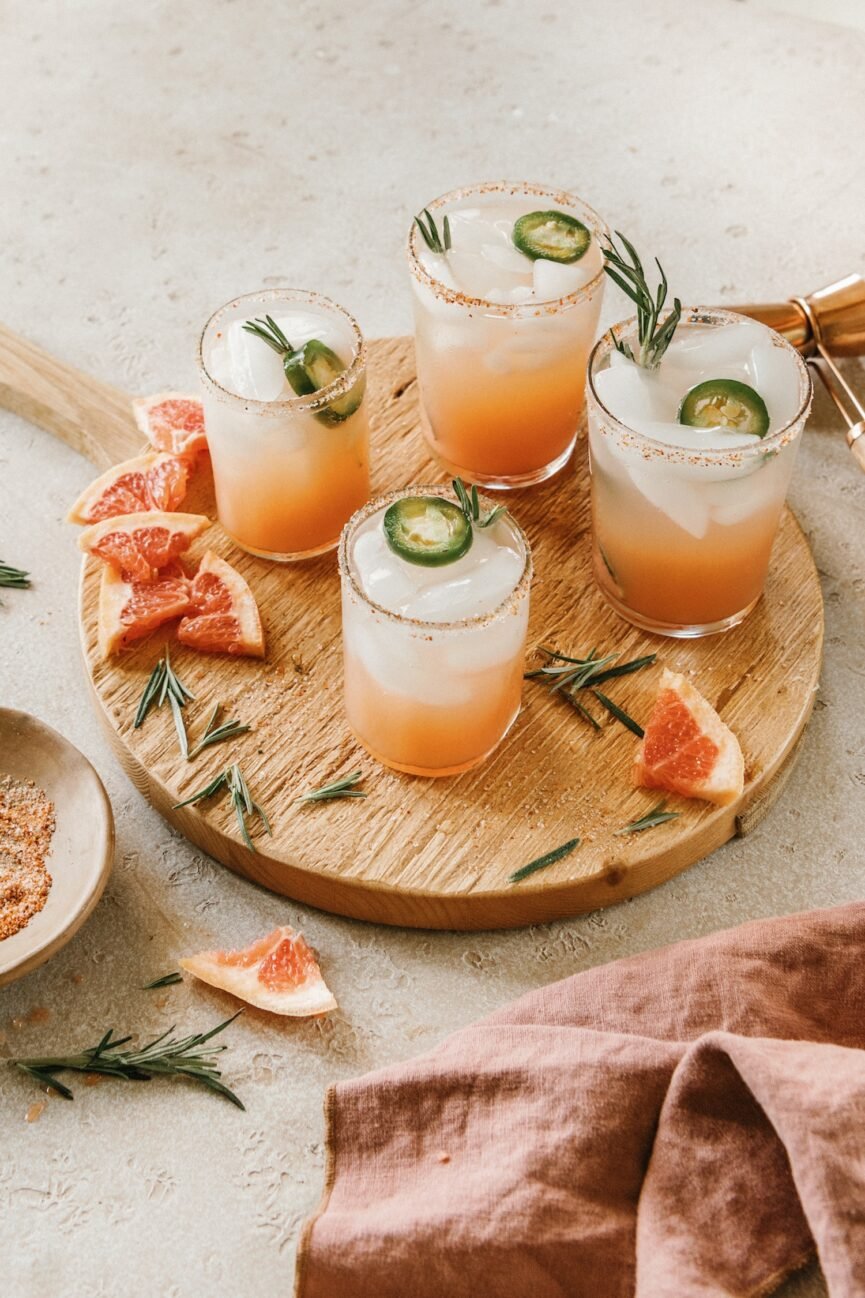
Spicy Mezcal Paloma
Why We Love It: Dare I say, this might just be the best summer cocktail of this year. I recently had my first sip of mezcal at a SXSW event here in Austin, and I was changed for the better. As I was warned by my company, it’s an acquired taste. Nevertheless, this Paloma’s kick of heat and smoky flavor is sure to win you over.
Hero Ingredients: Instead of agave or a sweetener, Camille’s hack of adding a bit of honey works like a charm.
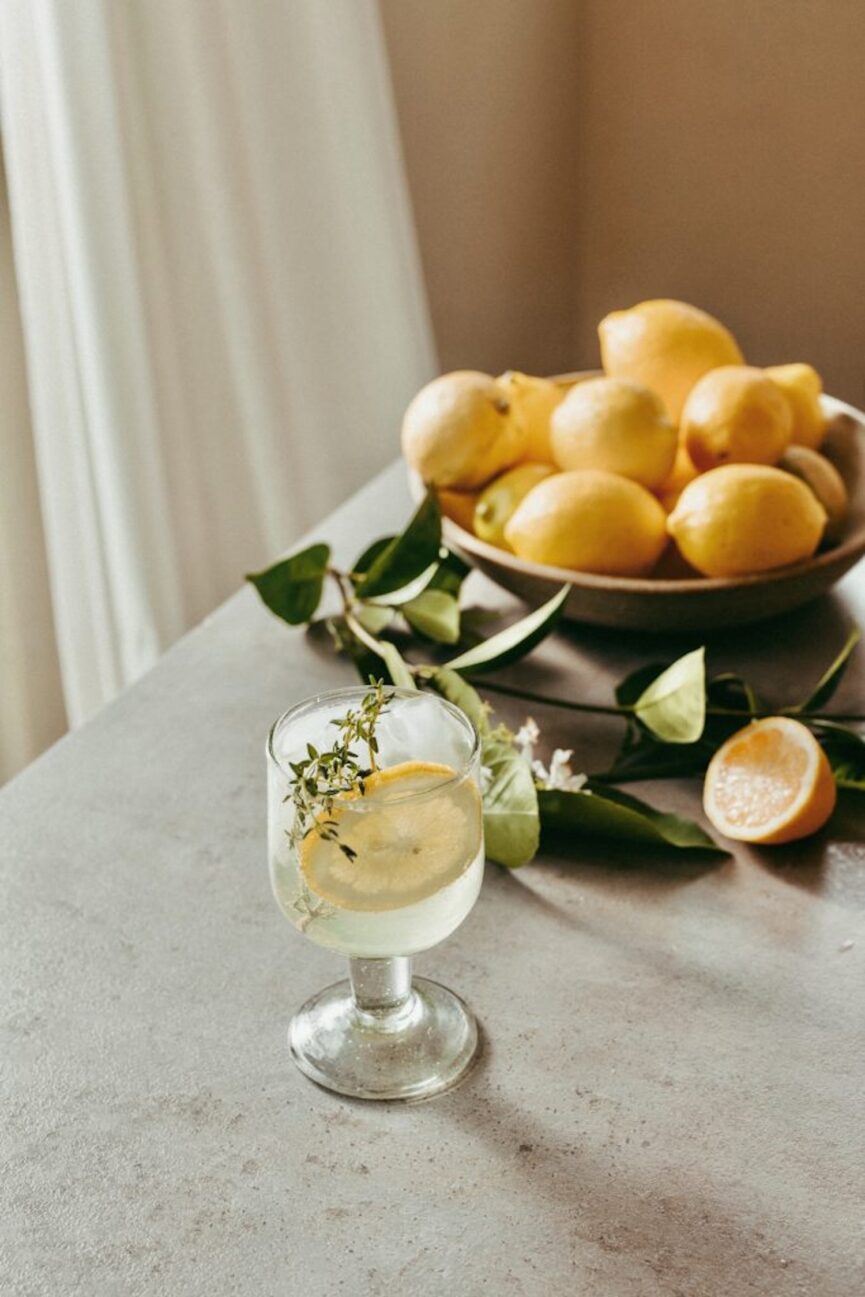
Limoncello Spritz
Why We Love It: If you spend your summer days dreaming of the Italian coast, try your hand at crafting this simple and elegant limoncello spritz. With bubbly prosecco, fresh lemon and mint, and, of course, your tangy and sweet limoncello, you’ll be on your way to la dolce vita in no time.
Hero Ingredients: It’s almost a requirement to add a lemon garnish to your glass.
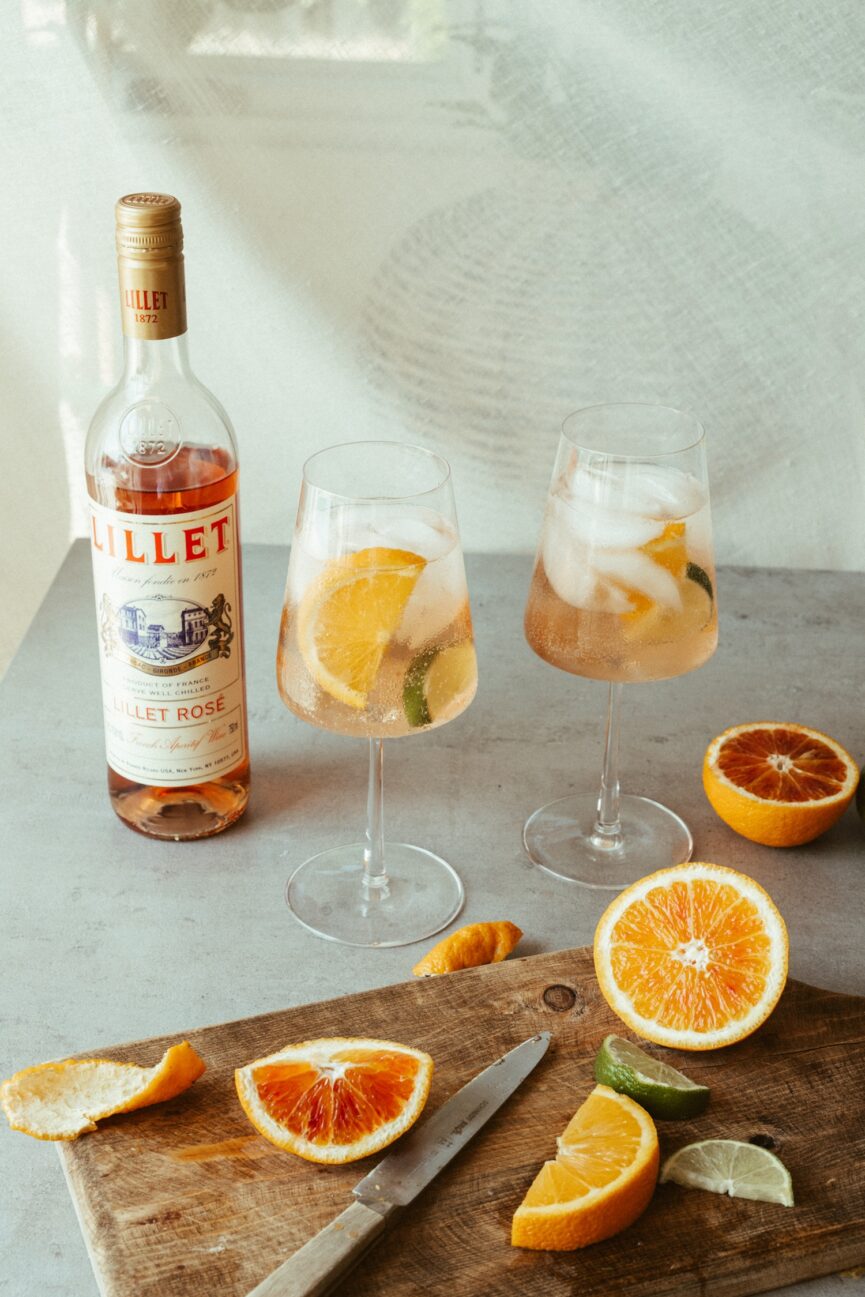
Lillet Spritz
Why We Love It: In my opinion, the Aperol spritz craze fully deserved the hype. Not to mention, any spritz-based drink is exactly what I gravitate toward during the warmer months. For all the Francophiles out there, our managing editor, Isabelle, crafted the perfect drink that features a sweet and fruity Lillet Rosé.
Hero Ingredients: Throw in some fresh citrus slices to spruce up this spritz!

Spicy Margarita
Why We Love It: Before I considered myself a Texas girl, I had yet to understand the desire to add an extra kick of heat to my food. However, I’ve since changed my ways and am now obsessed with adding spice any way I can—including in my favorite drinks. With a tajín rim and sliced chili peppers, this spicy recipe is just what you need for sipping poolside.
Hero Ingredients: Orange juice makes a sweet addition to your typical margarita recipe.
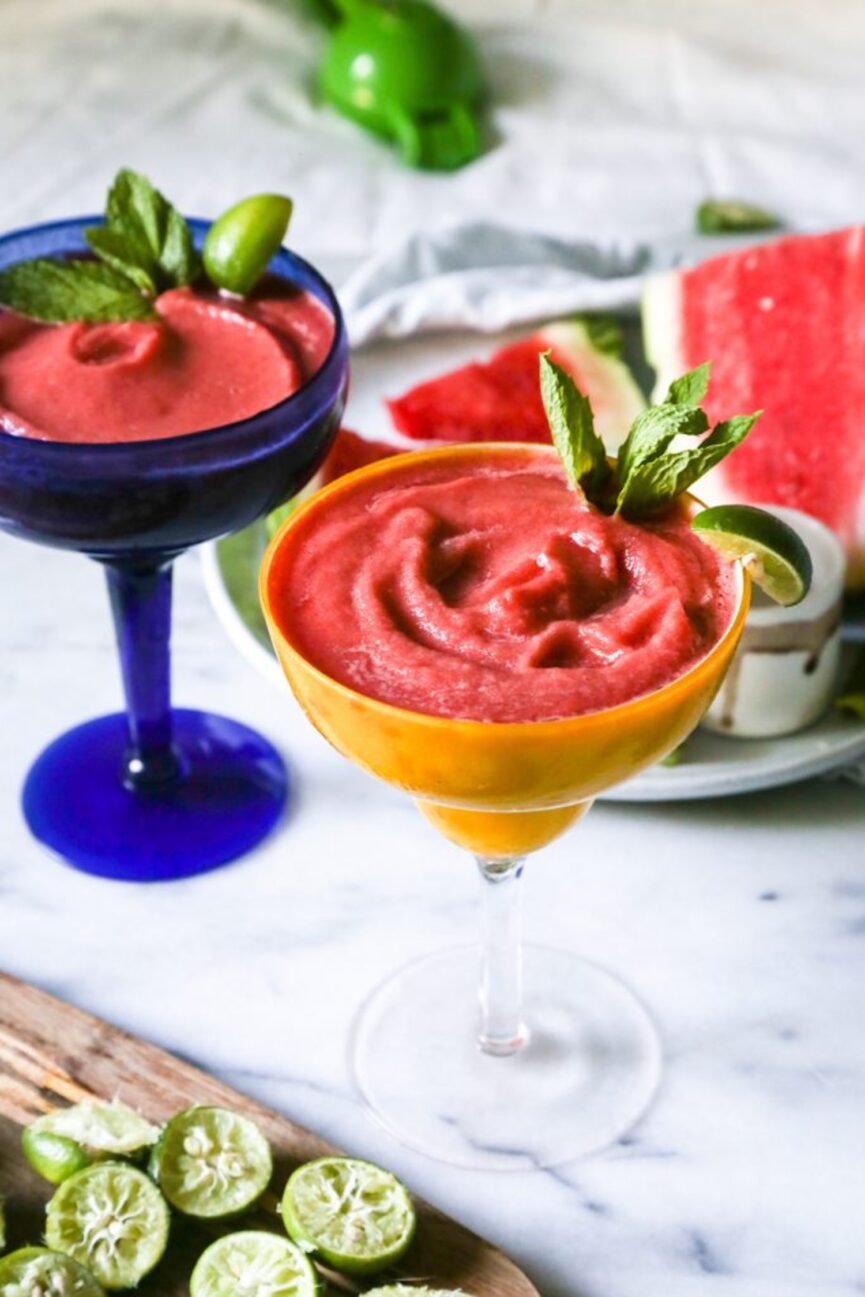
Watermelon Mint Margarita
Why We Love It: Frozen cocktails have a special place in my heart. Although they’re not my go-to drink order, there’s something about a slushy-like bev that instantly boosts my mood. In honor of summer’s most beloved fruit, this margarita uses fresh watermelon to curate one of the most refreshing cocktails I’ve ever tasted.
Hero Ingredients: Fresh mint is the perfect complement to watermelon.
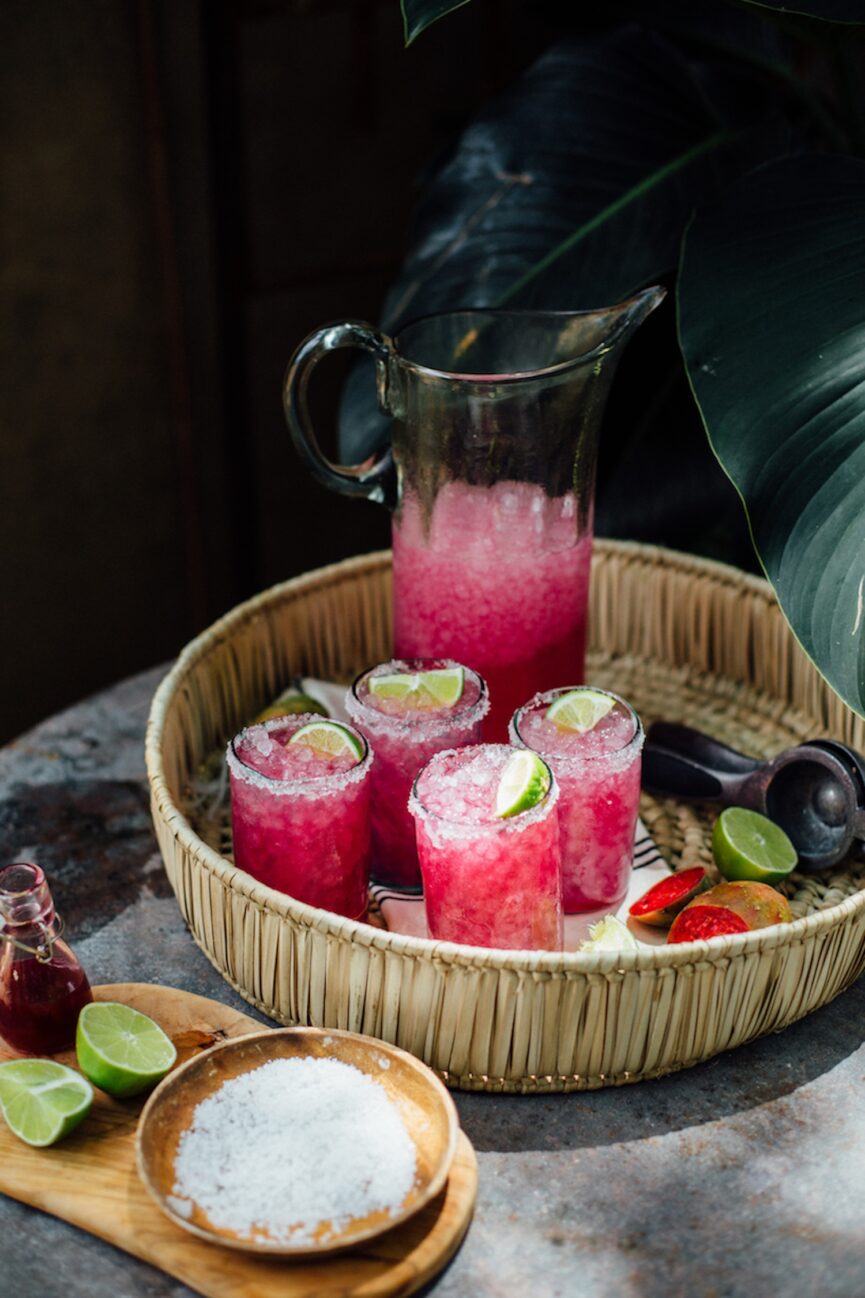
Pricky Pear Margarita
Why We Love It: Whenever I find a menu featuring a prickly pear drink, I’m immediately intrigued but also skeptical. What I love about this particular recipe is that it doesn’t go overboard on the sugary taste that prickly pear drinks can sometimes have. It boasts a well-balanced flavor with freshly squeezed lime juice and tequila of your choice.
Hero Ingredients: Not to contradict my previous statements, but I actually prefer a sugar rim on this particular drink.
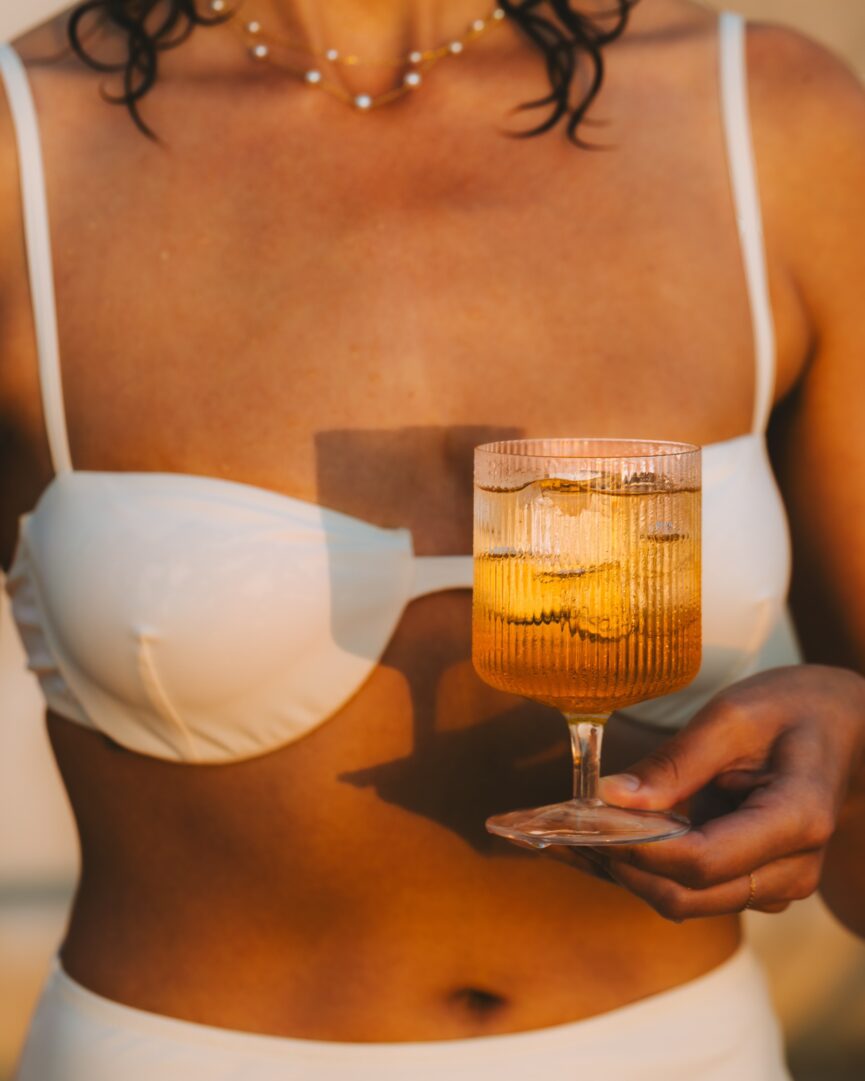
La Grande Plage
Why We Love It: I’ll turn to this French-inspired spritz after a day at the beach or while lounging by the pool. It’s classy and light, and it gives off the best coastal summer vibes in every sip. The secret ingredient? A bit of Angostura bitters for a herby, spiced flavor.
Hero Ingredients: This recipe shines thanks to a dry sparkling wine.
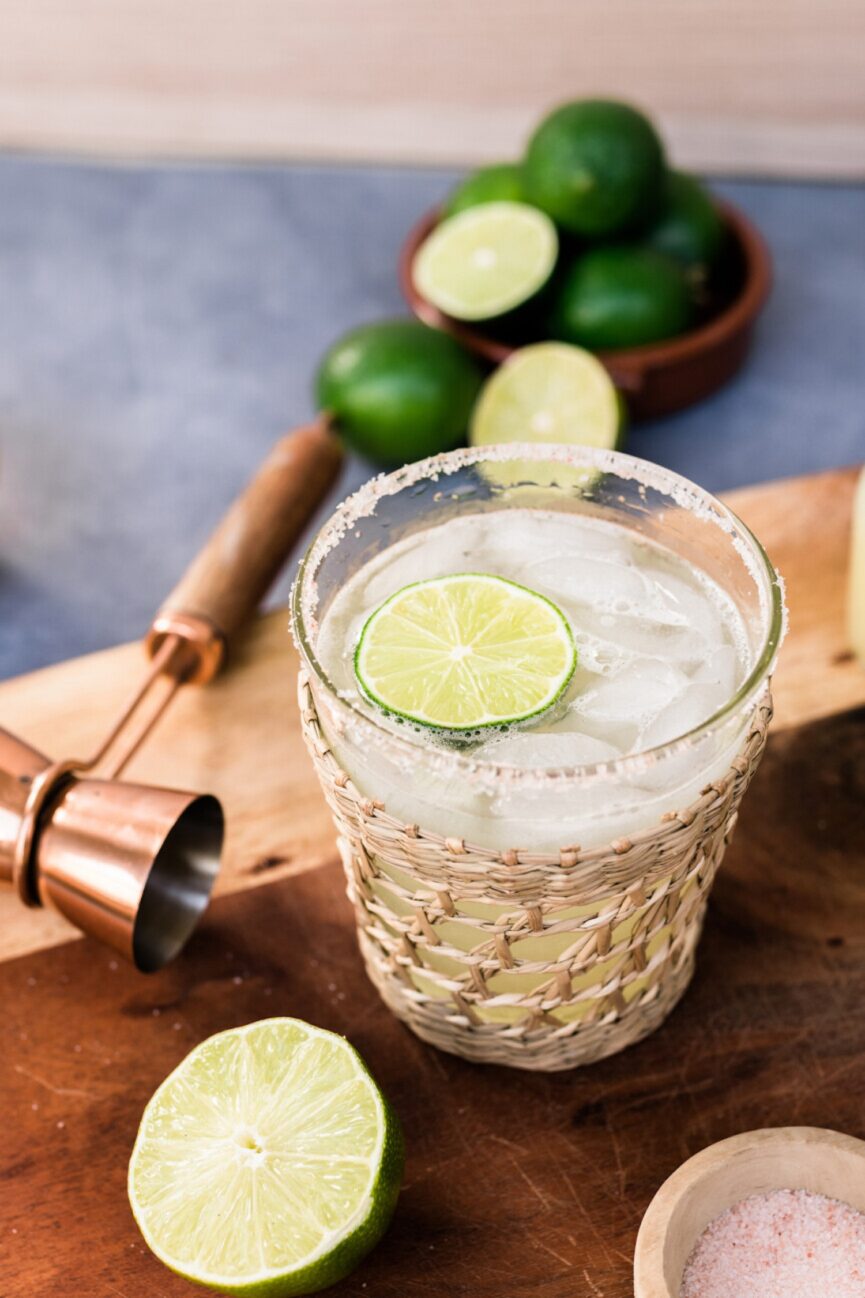
Classic Margarita
Why We Love It: Here in Texas, everyone has their own margarita recipe that they claim is the real deal. Call me biased, but after taste-testing hundreds of drinks around the state, Camille’s marg recipe is one of the best. You’ll want to break out your good tequila for this recipe—you won’t regret it.
Hero Ingredients: I always opt for Cointreau over triple sec for my margs.
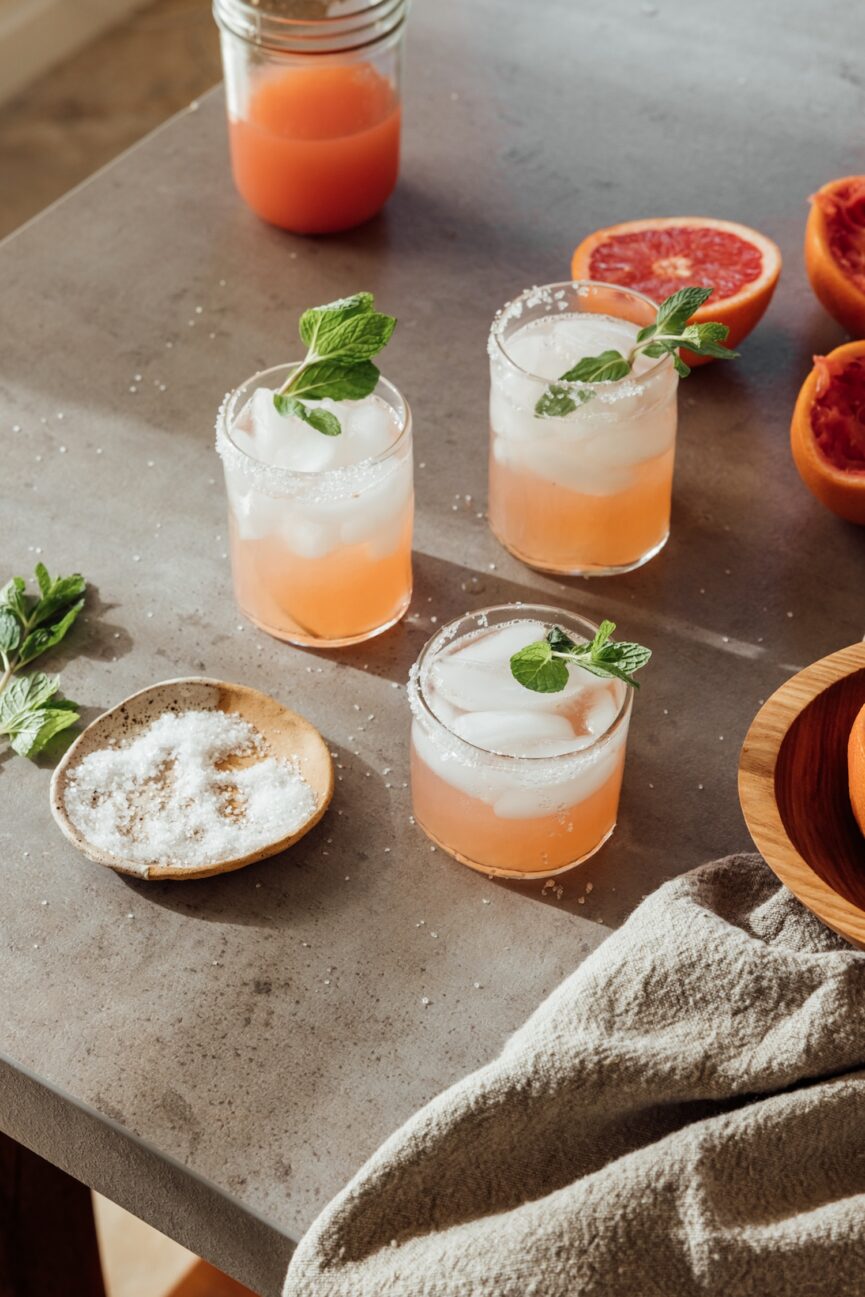
Salty Dog Cocktail
Why We Love It: For a simple and crowd-pleasing cocktail, this grapefruit juice and vodka combo is always my go-to. This variation of a classic greyhound cocktail can be crafted to each set of tastebuds by kicking it up a notch with a bit more vodka or adding in a bit more sparkling water to mellow things out.
Hero Ingredients: The salted rim is the cherry on top of this cocktail.
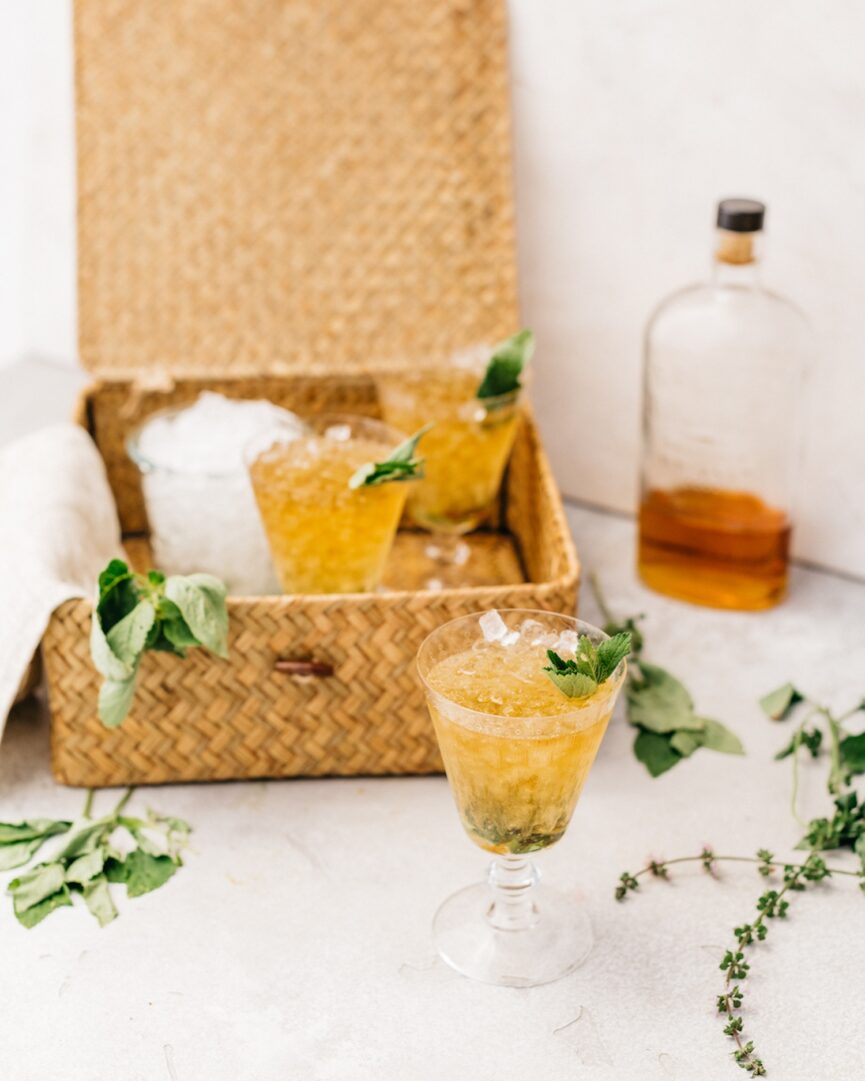
Mint Julep Cocktail
Why We Love It: A pet peeve of mine is sitting down at a bar or restaurant that’s fresh out of mint. As a big fan of this fresh herb, it’s one of my favorite ingredients to add to my at-home cocktails, particularly this recipe. With a touch of oaky and bold bourbon and a dash of honey, this four-ingredient recipe is one I can enjoy year-round.
Hero Ingredients: Opting for honey in place of simple syrup is a simple way to elevate this cocktail.

Elderberry Spring Cocktail
Why We Love It: St. Germain has always been one of my go-to liqueurs when I’m craving something sweet, slightly floral, and not too heavy. This cocktail—garnished with chamomile flowers and a spring of mint—is the perfect blend of sweet and citrusy flavors with a bubbly touch.
Hero Ingredients: Lemon juice is always a great addition to elderberry-based drinks.
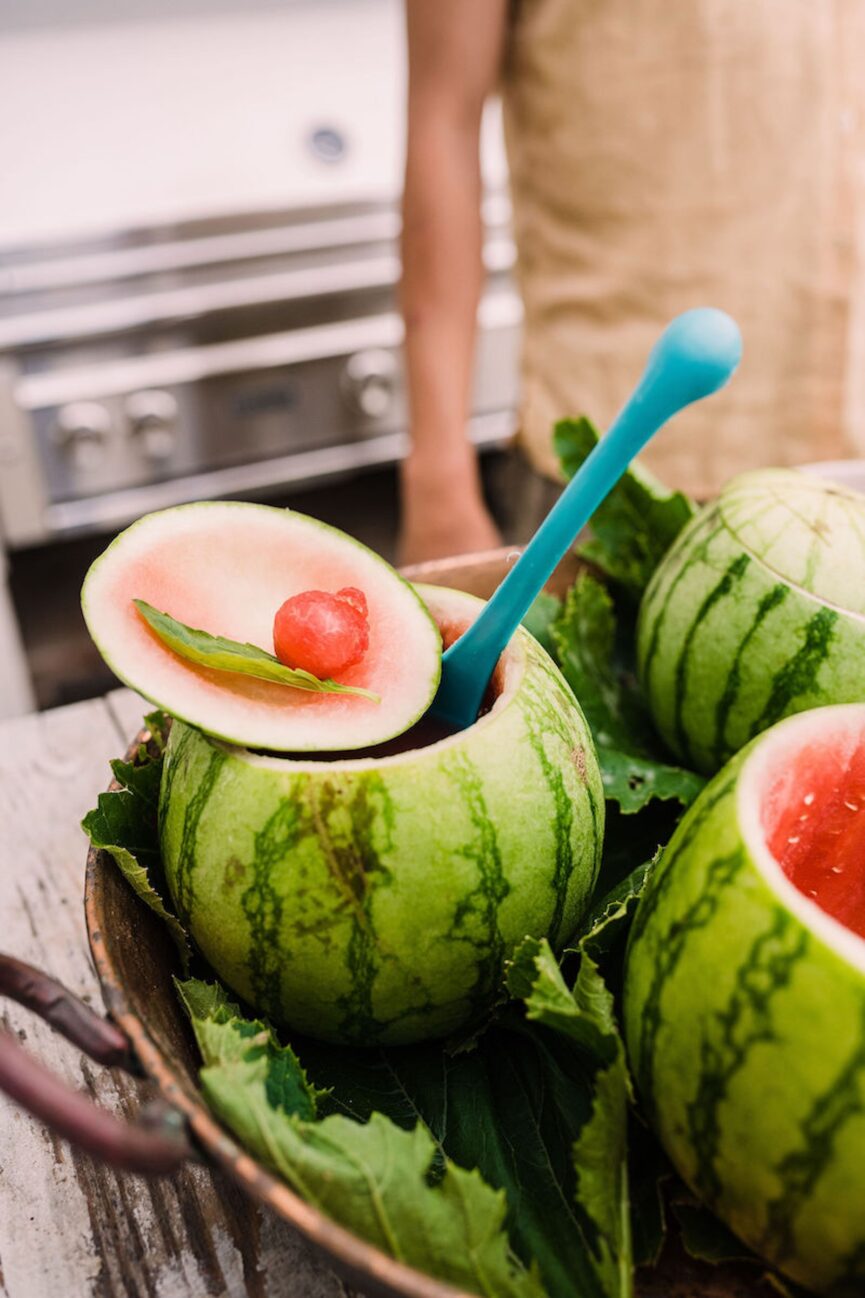
Watermelon Vodka Cocktail
Why We Love It: The best summer cocktails are ones that pull out all the stops. For this drink, simply shake all your ingredients and add them back into your watermelon ball. It’s that easy to craft a low-maintenance, crowd-pleasing cocktail.
Hero Ingredients: While you can technically do without the fresh watermelon here, I consider it a non-negotiable in your ingredient list.

The Sea Bird
Why We Love It: This tropical, vacation-inspired summer cocktail combines fresh juices. Jennifer Fiedler shares tips from her book The Essential Bar Book, such as adding Aperol and using a good aged rum to create one of the best summer cocktails we’ve ever sipped.
Hero Ingredients: Add a skewer with fresh pineapple to really finish off this stunning drink.
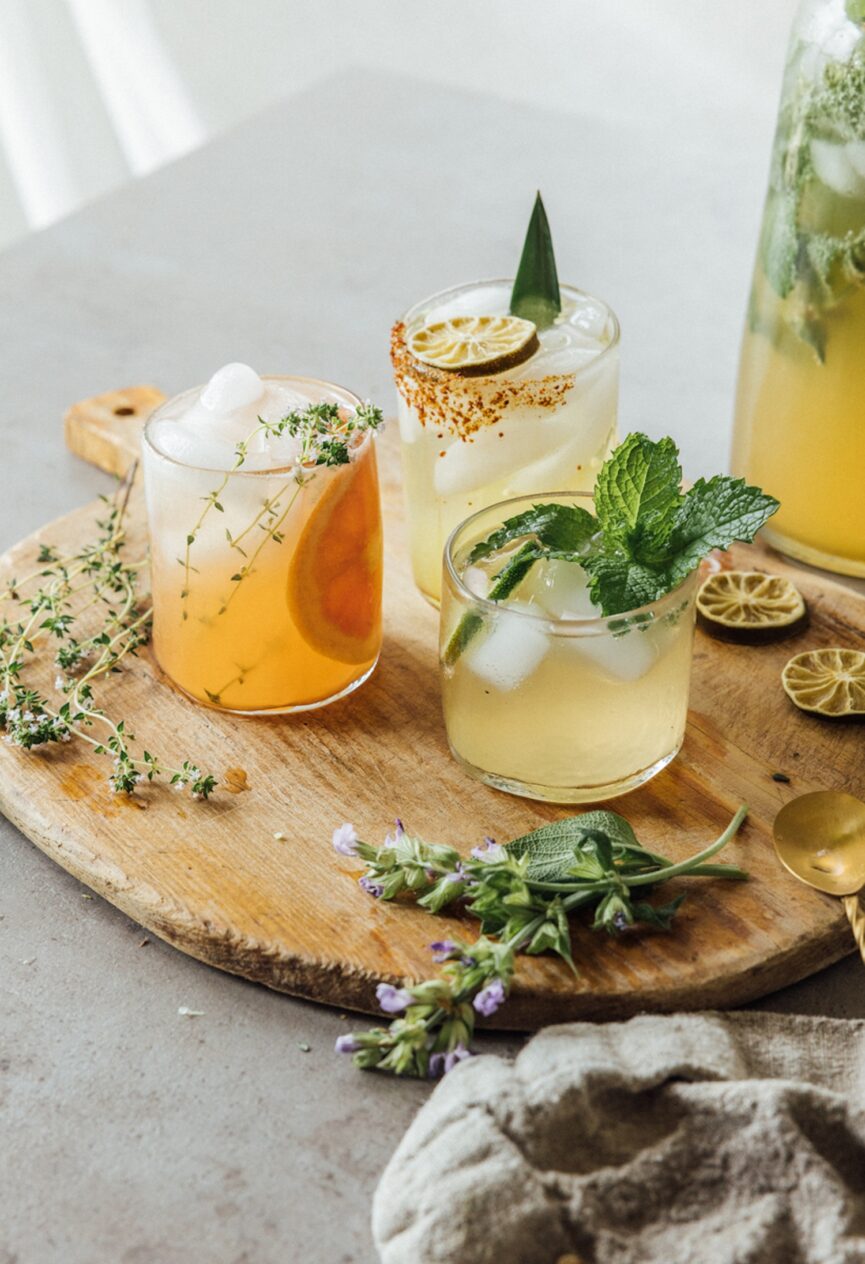
Kombucha Cocktails
Why We Love It: I’ve been addicted to kombucha’s probiotic power since my very first sip. The great thing about this health-forward beverage is that it can be paired with just about any liquor of choice, allowing you to craft the best summer cocktails with a fruity and bubbly base.
Hero Ingredients: Whether you brew your kombucha at home or buy it store-bought, you’ll need it on hand for this delicious experience.
Lifestyle
9 Low-Impact Exercises a Trainer Swears by for Results

This summer in Texas has been particularly brutal when it comes to the heat. While I usually spend my summers exercising outdoors, with temperatures in the triple digits, anything that involves excessive movement is pretty much off the table. In the past few months, I’ve been on a mission to find the best way to stay in shape, not overheat, and still stay connected with nature. The result? A newfound love for low-impact exercises.
While you can always take an indoor yoga, bar, or cycling class to beat the heat, if you’re looking for exercises you can do at home without nearing heat exhaustion—we’ve got you covered. Jordan Hana, certified yoga teacher and yoga sculpt instructor, gave us the run-down on the benefits of keeping your movement low-impact, the best exercises to implement into your weekly routine, and how to do it all safely in the heat.
Featured image from our interview with Sanne Vloet by Michelle Nash.
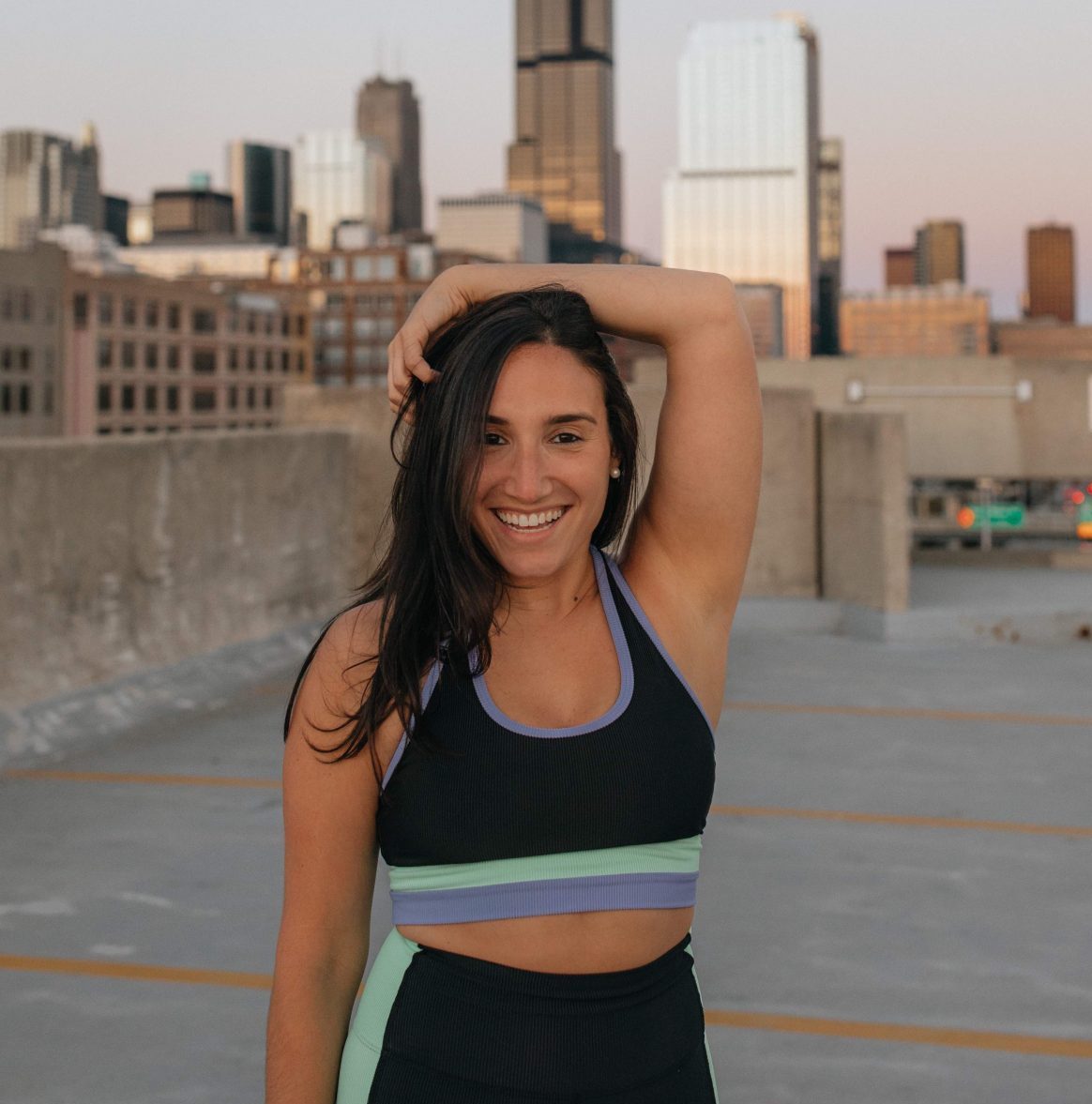
Jordan Hana
Jordan Hana is the founder & creator of The Arrow Methid—a fitness program that provides fun & invigorating fitness classes that challenge minds and bodies collectively through movement. The joy-filled variety of workouts span across Yoga (power & yin), Sculpt and Barre. Hana’s certifications include 200 Hour E-RYT (Corepower), Yoga Sculpt (Corepower), Barre (Barre Eclipse), Yoga Nidra (Soul & Steady).
What Makes Exercise Low-Impact
Low impact is simply just that—light (little to no) impact on your joints and at least one foot (if not both) connected to the ground. Low-impact exercises increase your heart rate slowly, are more fluid in motion, and are more gentle on the body. A few low-impact exercises include walking, yoga, pilates, barre, and swimming.

How Low-Impact Exercise Benefits the Body
Low-impact exercise is amazing for anyone and everyone. It’s generally safer and decreases your risk of injury as opposed to high-impact movement. Low-impact exercises tend to place some focus on flexibility, which is great for stability, alignment, and balance and can be used as a form of active recovery on days when you don’t want to rest but don’t want to overdo it.
I am a HUGE fan of low-impact workouts 5 times a week, but I know that many of us are yearning for a quick, high-intensity workout. I personally love three days of low impact, two days of high impact, and two days of rest. If, on a rest day, you want more, a low-impact walk is a perfect form of active recovery!
I’m not a doctor, but I genuinely think that low-impact exercises help with overall mental health—moving slowly, connecting with breath, and enjoying the workout—even a simple walk can do this!

Sample Workout Plan
If you’re looking to incorporate low-impact exercises into your weekly workout regime, Hana’s typical weekly workout schedule might help you get on track.
Monday: Barre
Tuesday: HIIT (a treadmill workout class)
Wednesday: Yoga
Thursday: HIIT (Cycling Class)
Friday: Pilates
Hana typically adds a walk into her weekly workout schedule as well—usually 2-3 days a week. It helps her get outside and take her two adorable pups for a walk. Outside time is key, not only for physical health but for boosting our mental wellness, too. Even just a 10-minute walk can do wonders. And if you’re avoiding the heat, try incorporating an early morning or evening walk into your routine.
Hana’s biggest note: get in tune with your body and start to listen to what it’s telling you. Soreness, injury, and major discomfort are telling you something is going on, and maybe you need to take a step back from the high-intensity workouts. If you’re new to fitness and unsure where to start, more low-impact workouts are definitely the way to go. And if you’re going the group fitness route, always let the instructor know you’re new! They love supporting beginners and helping you get the most from your workout.
Get in tune with your body and start to listen to what it’s telling you.
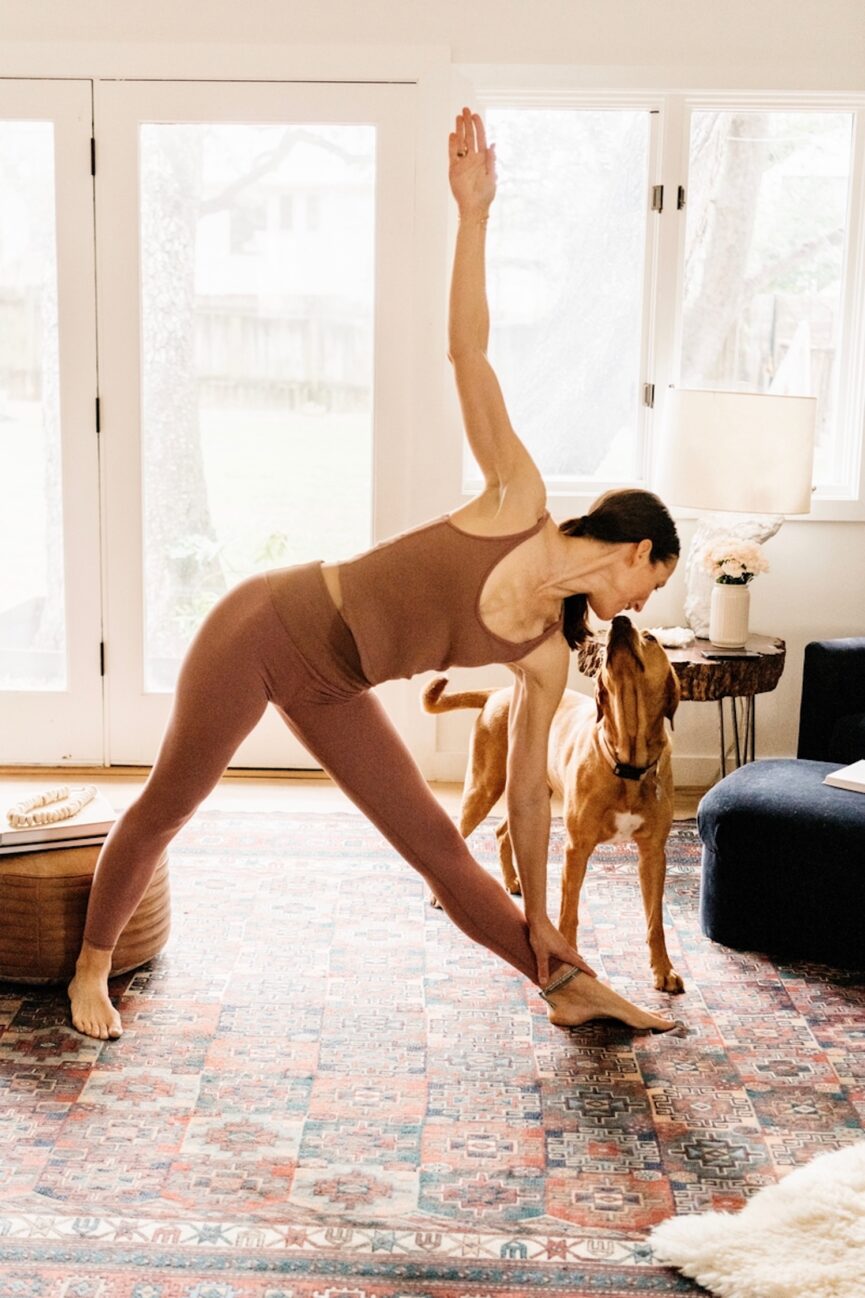
The Best Equipment for Low-Impact Exercises
Truly, the best thing about low-impact workouts is you really don’t need much! Your body weight is hands-down the best tool for low-impact exercises.
If you’re looking to expand your fitness equipment repertoire, a yoga mat is perfect to support your body so you’re not directly on the grass or concrete. I always like to incorporate hand weights—for a barre or pilates class, I suggest 3-5 pound weights—an exercise pilates ball (small, about six inches), and an exercise band. The addition of weights, pilates ball, and exercise bands allow you to expand and build more muscles, but moving slowly within these exercises ensures proper form and less risk of injury. Always the option to have a towel for sweat, music for good vibes, and water to hydrate—a definite MUST!
Tips for Working Out in the Heat
Adding heat (whether outdoors or indoors) increases the stress you place on your body, meaning the temperature of your body is increasing. It also dehydrates the body as you lose more fluids during these workouts, basically meaning you can fatigue faster. Your body also can’t cool itself as fast, so just make sure to take adequate breaths and prioritize recovery and hydration to help support your body within these workouts.
My #1 tip: Hydrate, Hydrate, Hydrate—this is key to working out in the heat. Adding an electrolyte supplement to your water is also a great way to replenish the minerals you lose when sweating!
Other tips to think about:
- Wear the right clothing. Lightweight, sweat-resistant, and breathable materials that are light in color
- Know where you’re at. If you’re new to working out outdoors (or in the heat), start slowly and increase gradually. Know your limits, and don’t push it if you don’t have to.
- Use sunscreen outdoors. Another must!
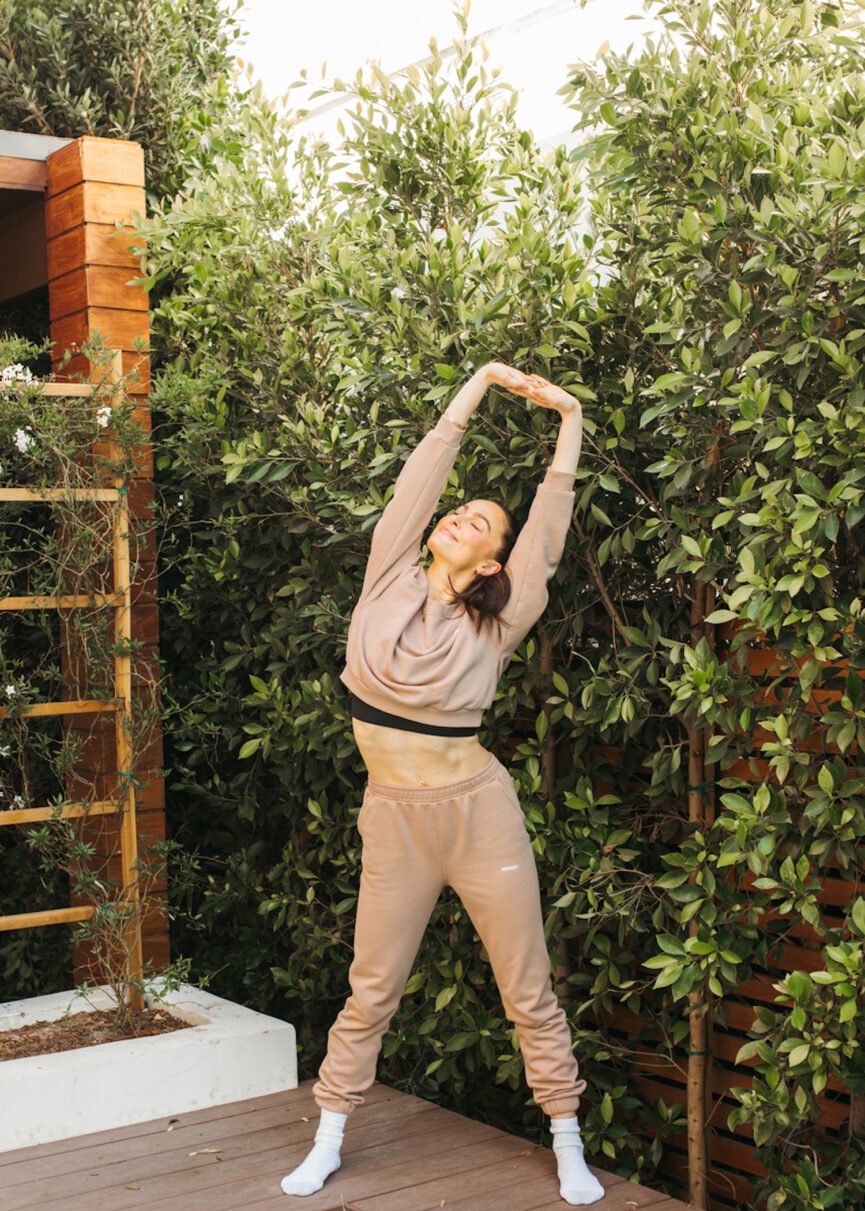
9 Low-Impact Exercises a Trainer Loves
Overall workouts:
- Go for a 30-45 minute walk. This is a great way to enjoy the outdoors and get a sweat in without doing anything too strenuous.
- Yoga—Flow through some Sun A’s. One of the foundations of vinyasa yoga is sun salutations. Sun Salutation A is a series of nine movements that sync to your breath to help build balance and strength in a subtle way.
Squat + Oblique Twist
Also known as a ‘pop squat twist,’ this exercise targets your glutes, quads, and obliques. While it can be done without any equipment, you can add an exercise band around your upper calf to increase tension and turn on your glutes during your squat.
Donkey Kicks
Donkey kicks are a highly glute-focused exercise that also activates the hamstrings and core. This exercise can be done on its own or by squeezing an exercise ball between your knee and hamstring.
Plank
While we all dread planks, they target your core and shoulders and are a fast way to build upper body strength. If the plank isn’t enough burn for you, add slow mountain climbers into your posture.
Bicep Curl to Overhead Shoulder Press
Your biceps and shoulders will feel it with this exercise. This is a great opportunity to use your hand weights (start with a lower weight and then increase) or find a water bottle or heavier object that’s laying around the house.
Lunge + Overhead Tricep Extension
Lunges with tricep extensions do it all—targeting glutes, quads, and triceps. Complete all reps on your right side before moving onto your left, and incorporate hand weights into this exercise.
Bird Dog
This exercise is done by extending your arm forward on all fours and then extending the opposite leg, crunching both limbs in toward your stomach to target your core, obliques, and glutes.
Pilates 100s
When I think of pilates, this is the first thing that comes to mind. Targeting your core, extend your legs at a diagonal while laying on your back on a mat. Reach your arms long by your side with palms facing down. Pump your arms vigorously but don’t lift any higher than the hips. While pumping arms, inhale for five counts and exhale for five counts to complete one exercise. When this is done 10 times with five inhales and five exhales, it equals 100.
Cobra/Locust
One of the core movements in vinyasa yoga is cobra/locust pose. This exercise activates your back muscles and glutes, squeezing both muscles to lift your body slightly off the ground.
Lifestyle
Myths vs. Facts You Should Know

The time has come to shift our mindset about carbs. Because contrary to popular belief, they aren’t the villains. Before you protest, hear me out: I’m a Nutrition Consultant who once believed carbs were the culprit. Fast-forward a decade and my PCOS is in remission, I’ve birthed two babies, and my body grows stronger by the day. Without carbs, none of these things would be possible. But with countless diets advocating for a low-carb lifestyle, it’s easy to assume carbs have no place on your plate. Fortunately, this isn’t the case. With your vitality in mind, we’re debunking common carb myths and exploring why they’re essential to a balanced diet.
Spoiler alert: Your energy, brain, and hormones need this macronutrient. Let’s ditch restrictive tendencies and celebrate the goodness of carbs, together.

Why do carbs get a bad rap?
We have diet culture to thank. It has long perpetuated the message that carbs are inherently bad. It paints them as the primary culprits behind weight gain and poor health. This narrative is driven by numerous fad diets and popular misconceptions—which often promote low-carb regimes as the key to slimmer, healthier bodies. As a result, we’ve developed a fear of carbs, avoiding them without understanding their essential role in our well-being. This one-dimensional view neglects two things: the complexity of nutrition and the importance of balanced eating habits.
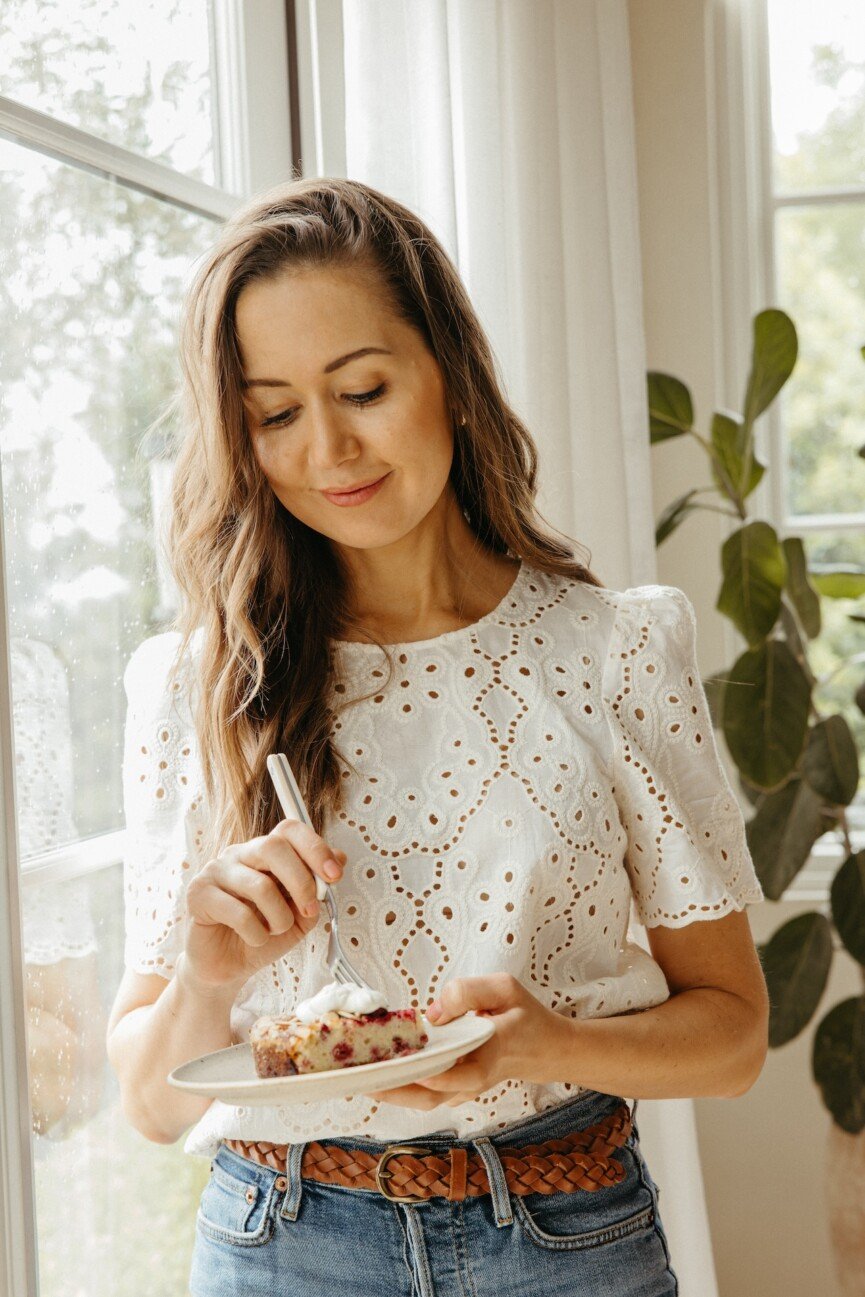
Carbs: Our Primary Energy Source
Carbs are our primary source of fuel (especially for our brains and muscles). When we eat them, they break down into glucose. And this glucose energizes all of our cells. Therefore, carbs are vital for everything from brushing our teeth and responding to text messages to lacing up our shoes and going for a walk. We need them to survive. Misconceptions aside, the goal is to balance your carb intake with a nutritious diet. In turn, this provides sustained energy levels and promotes metabolic efficiency.
Not All Carbs Are Created Equal
It’s no surprise that carbs receive their fair share of criticism. But this largely stems from the prevalence of ultra-processed carbs in our modern diets. These less nourishing carbs (sugary snacks, refined white bread, etc.), lead to rapid blood sugar spikes. In turn, this increases our overall hunger, causes metabolic problems, and toys with our delicate hormones.
On the other hand, others are incredibly nutritious: fiber-forward veggies, polyphenol-rich fruits, legumes, and sprouted grains. These (unlike their refined carb counterparts) provide vital nutrients.

What are the different types of carbohydrates?
Let’s unpack the basics:
1. Starchy Carbohydrates
Starchy carbs are complex carbs that provide a significant source of energy. They’re made up of long chains of glucose molecules, which take longer to digest and provide a steady release of fuel.
- Examples: Potatoes, rice, pasta, bread, corn, and legumes—like beans and lentils.
- Benefits: These carbs are excellent for sustained energy and are often rich in vitamins and minerals.
While we need starchy carbs, these are the least blood sugar-friendly. Depending on your health goals or conditions, you’ll want to maximize (or minimize) starchy carbs. For example, if you’re an endurance athlete, work a job that requires heavy lifting/a lot of walking, are pregnant, or you’re recovering from an illness, you’ll likely benefit from a higher (starchy) carb diet. If you’re prediabetic, diabetic, or have PCOS, you may need to eat fewer starchy carbs.
2. Non-Starchy Carbohydrates
Non-starchy carbs, on the other hand, include a variety of produce that is both lower in calories and sugar compared to starchy carbs. These carbs are rich in water and micronutrients.
- Examples: Leafy greens, broccoli, cauliflower, peppers, berries, apples, and citrus fruits.
- Benefits: These carbs are high in vitamins, minerals, and antioxidants. They’re ideal for maintaining a healthy weight and supporting overall health.
3. Fiber
Fiber—a bit of an outlier—is another type of carb. The body can’t digest fiber, so it passes through the digestive system (largely intact), keeping hunger and blood sugar in check.
- Types: Soluble fiber (dissolves in water and forms a gel-like substance) and insoluble fiber (does not dissolve in water and adds bulk to stool).
- Examples: Soluble fiber is found in oats, beans, lentils, apples, and citrus fruits. Insoluble fiber is found in whole grains, nuts, seeds, and veggies (like carrots, celery, and tomatoes).
- Benefits: Fiber is essential for digestive health, helps to prevent constipation, lowers cholesterol levels, and aids in weight management by promoting a feeling of fullness.
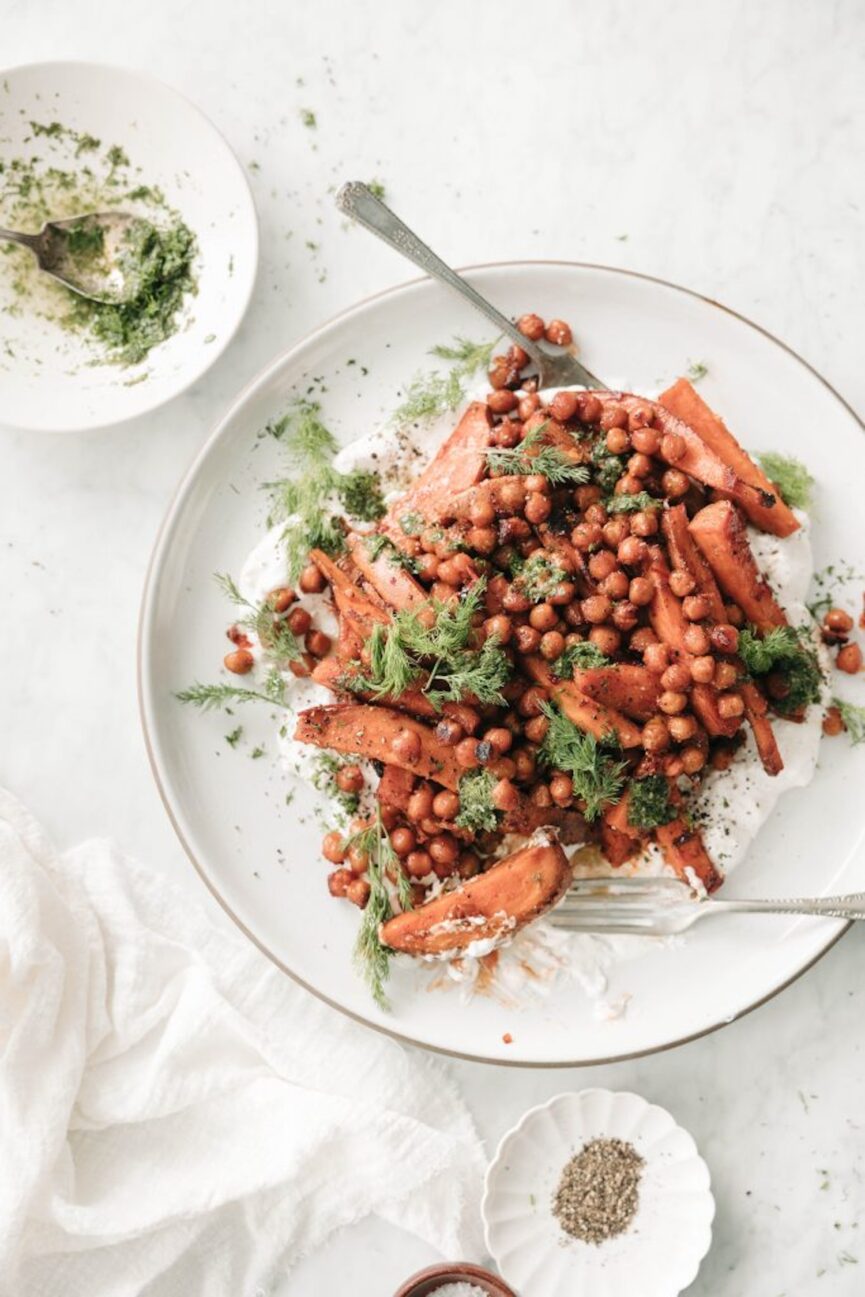
Healthy Carb Sources: What to Eat
Embracing the right types—and amounts—of carbs ensures our bodies have the fuel needed to thrive. More on how to calculate your carb needs, below! But generally speaking, healthy carbs include fiber-rich produce (colorful fruits and veggies), tubers (potatoes, sweet potatoes, and yams), legumes (beans and lentils), whole grains (quinoa, brown rice, oats, etc. ), and dairy (organic/pasture-raised milk, yogurt, and kefir).

Less Healthy Carb Sources: What to Minimize
For the sake of blood sugar balance, digestion, and hormone health, it’s best to minimize ultra-processed carbs. After all, these are stripped of their nutritional value (and loaded with added sugars). What do these include? Sugary cereals, granola bars, pastries, and sodas. Instead, enjoy these on special occasions or when a relentless craving strikes.
Hot tip: If you pair your favorite refined carb with a source of protein/healthy fat/fiber (i.e., a drizzle of tahini, a handful of walnuts, an egg, Greek yogurt, etc.) you’ll experience less of a blood sugar spike! Bonus points if you eat your carbs toward the end of your meal/snack.
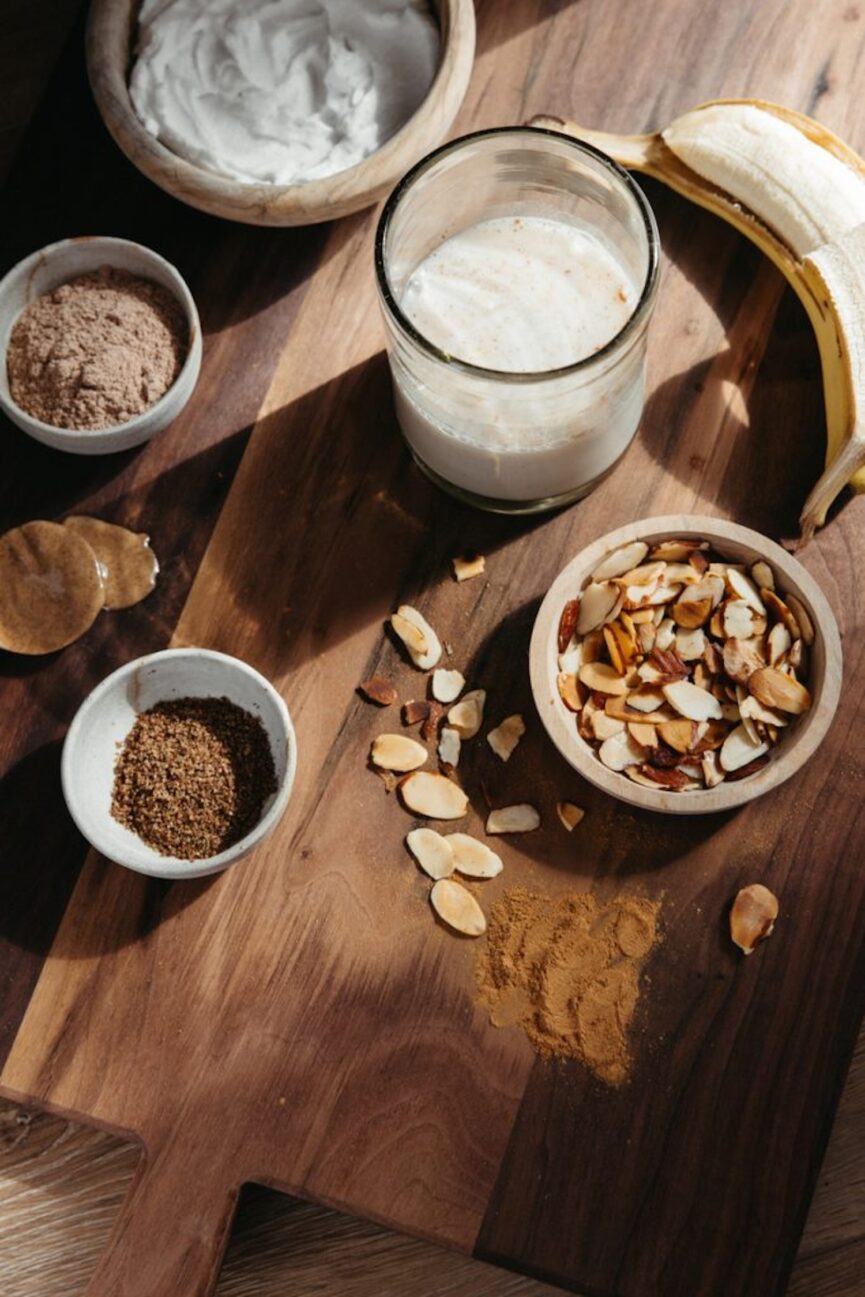
How many carbs do you need?
Determining how many carbohydrates you need is a bit nuanced. You’ll want to take your age, sex, activity level, and overall health goals into account. But to get started, consider these five factors:
1. Daily Recommendations
General guidelines for carbohydrate intake vary based on different health organizations:
- The Dietary Guidelines for Americans recommend that 45-65% of your total daily calories come from carbohydrates.
- The Institute of Medicine suggests a minimum of 130 grams of carbohydrates per day for adults.
2. Activity Level
Your physical activity level significantly influences your carbohydrate needs:
- Sedentary Lifestyle: If you have a low level of physical activity, you might need fewer carbs. Around 3-5 grams of carbs per kilogram of body weight per day might be sufficient.
- Moderate Activity: For moderate exercise (about 1 hour per day), you might need 5-7 grams of carbs per kilogram of body weight per day.
- High Activity: For athletes or highly active individuals, 7-10 grams of carbs per kilogram of body weight per day might be necessary.
3. Health Goals
- Weight Loss: If your goal is to lose weight, you might consider a lower-carb diet. Many low-carb diets suggest consuming 50-150 grams of carbs per day.
- Maintenance: For maintaining weight, the general recommendation of 45-65% of your total daily calories from carbohydrates is a good target.
- Muscle Gain: If you’re looking to gain muscle, you might need more carbs to fuel your workouts and recovery.
4. Medical Conditions
Certain medical conditions require specific carbohydrate adjustments:
- Diabetes: Managing carbohydrate intake is crucial for blood sugar control. Work with a healthcare provider to determine the right amount of carbs!
- Digestive Issues: Some people benefit from adjusting their carb intake based on digestive conditions, like IBS or celiac disease.
5. Personal Tolerance and Preferences
Everyone’s body reacts differently to carbohydrates. Some of us feel better on a higher-carb diet, while others might thrive on a lower-carb intake. It’s important to pay attention to how your body feels and performs with different carbohydrate levels. A continuous glucose monitor can help you determine this!
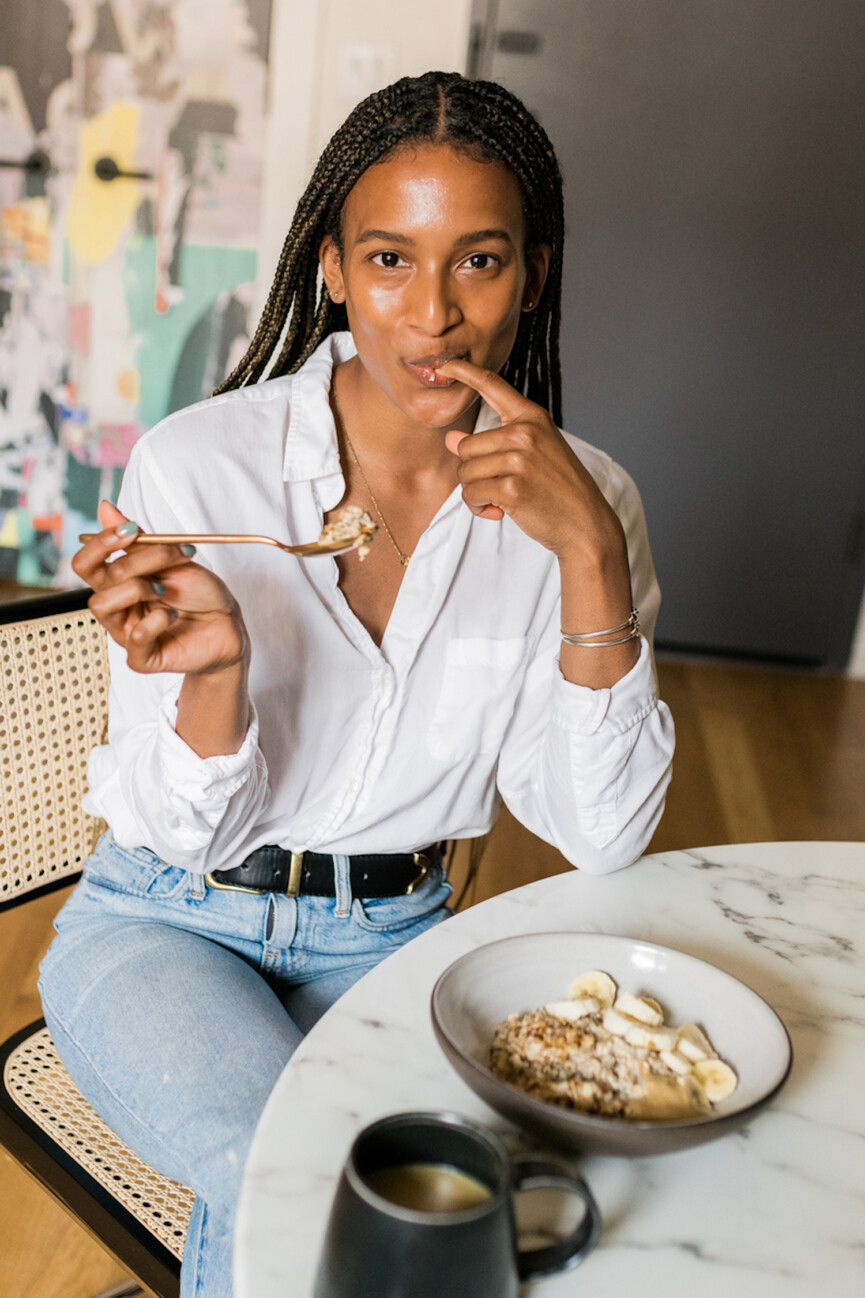
Carbs and Blood Sugar Balance
Without sounding like a broken record, carbs play a crucial role in blood sugar regulation. And we want to maintain normal blood sugar levels as frequently as possible. This helps with stable energy levels, fewer mood swings, healthier hormones, and reduces the risk of chronic disease (I.e. diabetes). All of that to say, not all carbs have the same effect on blood sugar levels.
Simple Carbs
Simple carbs, found in sugary foods and drinks, are quickly digested and can cause rapid spikes in blood sugar, followed by crashes that leave you feeling tired and hungry.
Complex carbs
Complex carbs are digested more slowly, providing a gradual release of glucose. This helps maintain stable blood sugar levels.
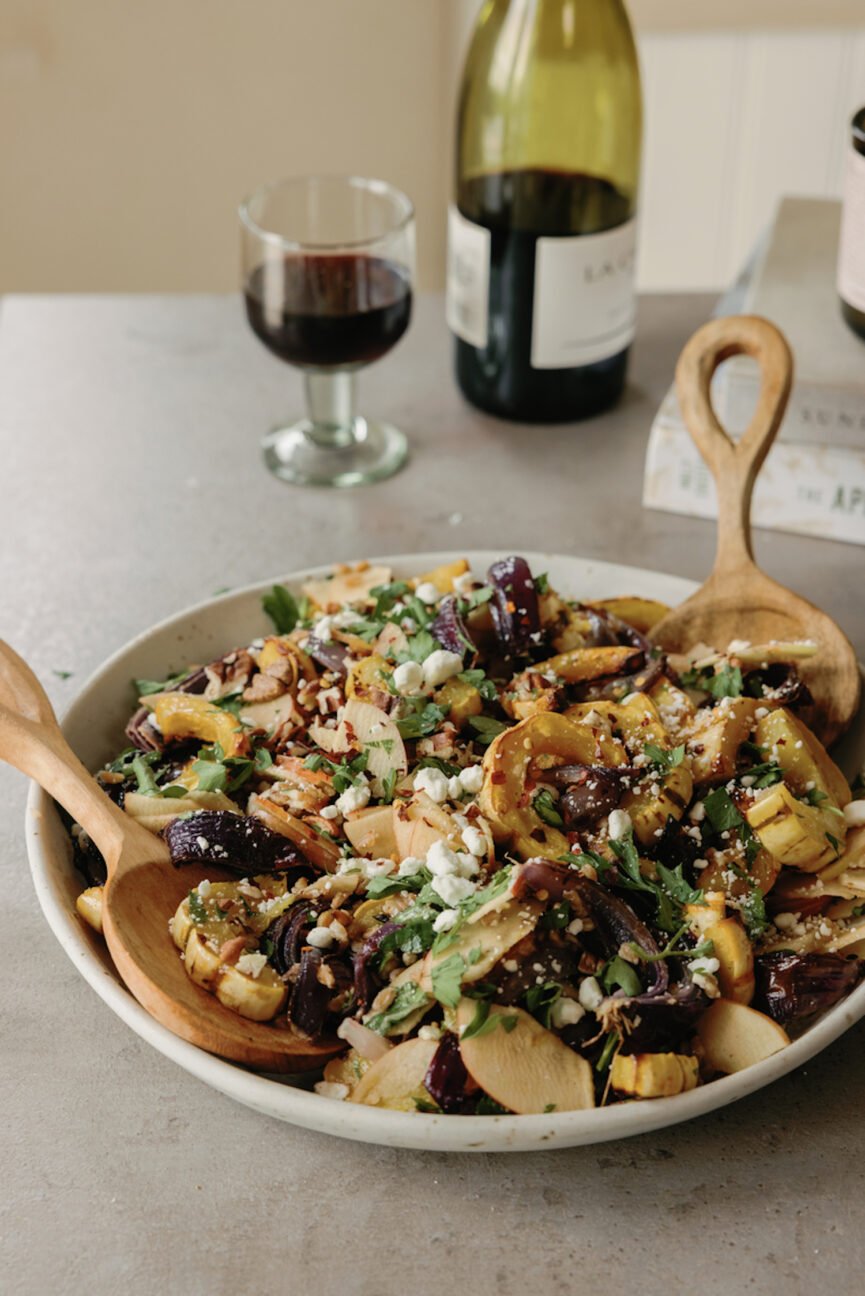
How to Incorporate Healthy Carbs Into Your Meals
Need inspo? Try these ideas for a day of healthy-carb eating.
- Start your day with a breakfast of eggs scrambled with greens, mushrooms, tomatoes, and goat cheese. Nosh on a slice of sourdough with avocado on the side.
- For lunch, enjoy a quinoa salad with a high-quality protein source—like tempeh, smoked salmon, or leftover steak. Drizzle your favorite olive oil on top!
- For dinner, dig into a hearty plate of 100% whole-grain pasta (or a pasta alternative, like Kaizen) paired with sautéed zucchini and diced chicken sausage.
If you build your plate around protein and fiber, your starchier carbs will fall—naturally—into place.
Low-Carb Diets: Are They Sustainable?
Since the 1970s, low-carb diets have touted the potential for weight loss. While reducing your carb intake can lead to initial weight loss, it’s important to consider its long-term effects. Eliminating—or severely restricting—carbs can lead to nutrient deficiencies, decreased energy levels, an uptick in cortisol, and an increased risk of certain health issues (i.e., amenorrhea).
Additionally, low-carb diets are typically difficult to maintain over time. Hello, vicious cycle of weight loss and regain. Instead of cutting out carbs entirely, focus on fiber-rich carbs to support your wellness goals.
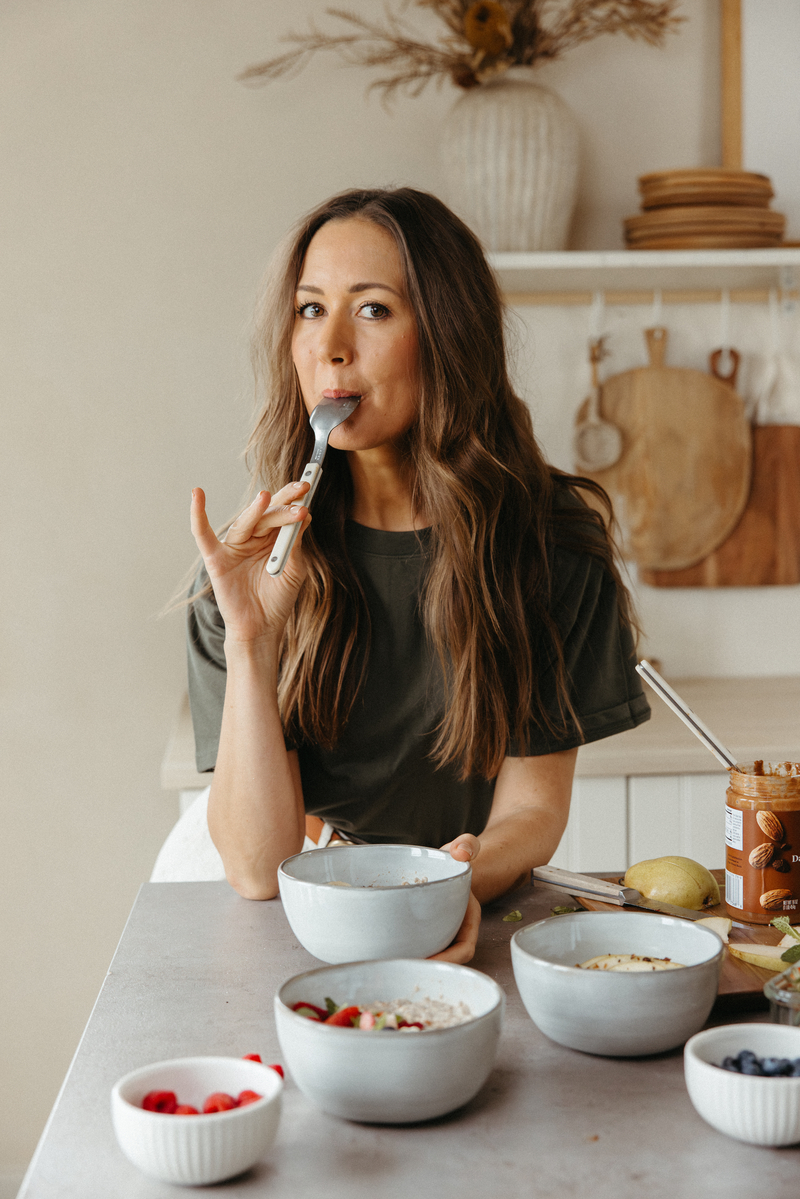
The Truth About Carbs and Weight Gain
The idea that carbs are solely responsible for weight gain is a common (and unfortunate) misconception. Weight gain—in general—is the result of an imbalance between calorie intake and expenditure, regardless of the source of those calories. While it’s true that consuming large amounts of refined carbs can contribute to weight gain, this has to do with their high-calorie content and low nutritional value. In contrast, fiber-forward carbs can actually support weight management. They provide essential nutrients while keeping you feeling full and satisfied.
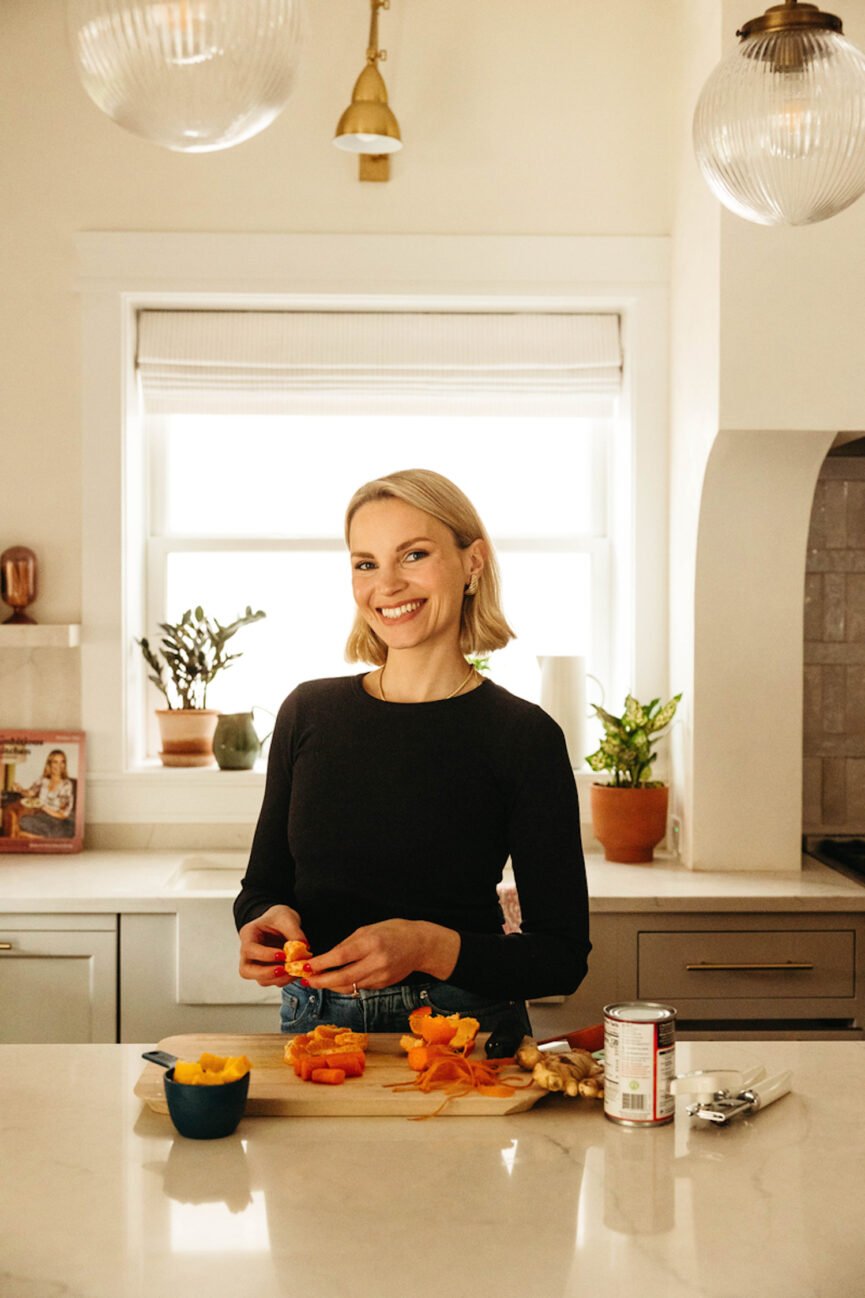
Carbs—They’re Not the Villain
Carbs are an essential part of a healthy diet. By understanding the difference between healthy and not-so-nourishing carbs, you can make informed choices that support your overall well-being. Focus on incorporating fiber-rich produce and whole grains into your meals, always pairing carbs with protein and healthy fats. When in doubt, crowd out ultra-processed carbs by adding more healthy carbs to your plate. There’s no need to eliminate carbs! Rather, choose options that fuel your long-term health goals. And when that pizza craving strikes, we encourage you to say yes.
-

 African History5 years ago
African History5 years agoA Closer Look: Afro-Mexicans 🇲🇽
-

 African History6 months ago
African History6 months agoBlack History Facts I had to Learn on My Own pt.6 📜
-

 African History5 years ago
African History5 years agoA Closer Look: Afro-Mexicans 🇲🇽
-

 African History1 year ago
African History1 year agoMajor African Tribes taken away during the Atlantic Slave Trade🌍 #slavetrade #africanamericanhistory
-

 African History1 year ago
African History1 year agoCameroon 🇨🇲 World Cup History (1962-2022) #football #realmadrid #shorts
-

 African History6 months ago
African History6 months agoBlack History Inventors: Mary Kenner 🩸
-

 African History1 year ago
African History1 year agoNo African pre-Columbus DNA? 🤯🤯 #history #mesoamerica #mexico #african
-

 African History1 year ago
African History1 year agoOrigin Of ‘Cameroon’ 🇨🇲😳#africa
























